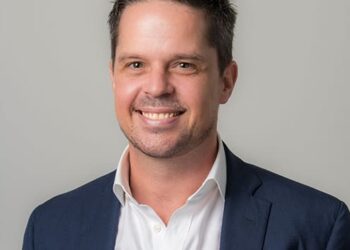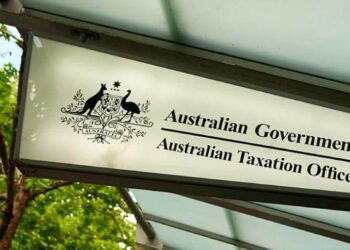Daniel Butler, director of DBA Lawyers, said for most Australians superannuation is their largest asset except for the family home, so it is important to consider how it should be dealt with upon death.
Unlike personally held assets, however, superannuation is not bequeathed via a will and can only be left to certain people.
“Death benefit nominations can be a vital component of estate planning, guiding the payment of superannuation and, in certain cases, pension benefits upon an individual’s death,” Mr Butler said.
Binding death benefit nominations (BDBNs) do offer greater certainty by removing the discretionary aspect of an SMSF fund trustee who may not be the executor of the deceased person’s will.
“Many SMSF members want to know their directions in their BDBN will be respected and this can provide significant peace of mind,” he said.
He warned though that while a BDBN is binding on the trustee of a fund, there have been past instances where a BDBN was ignored and resulted in costly legal proceedings such as in the case Wooster v Morris [2013] VSC 594.
“By removing the trustee’s discretion, a BDBN will also overcome a number of issues associated with the requirement that trustees must follow a proper process when exercising a discretion to pay superannuation death benefits,” he said.
The trustee only needs to refer to the validity of a BDBN and the fund’s governing rules to justify its position in paying death benefits per that BDBN.
“In particular, the trustee will not need to demonstrate that it has only made payment after properly exercising discretion in accordance with applicable trustee duties by fully considering all eligible beneficiaries based on their individual financial circumstances,” he added.
“This means there is no need for the trustee to go through a careful process of contacting all potential beneficiaries and ascertaining their circumstances prior to making a decision regarding payment of death benefits.”
When no BDBN exists and a proper claims staking process has not been undertaken, trustees can face costly and protracted disputes which can result in courts upsetting their decisions and even removing them as trustees.
“This can happen especially in cases where there is a blended family and the executors of the estate are not the same persons as the trustees of the fund,” Mr Butler said.
If a deceased did not have a BDBN, the spouse acting as the executor or administrator of the estate may find themselves in a conflicted position if they seek to have the death benefits paid to them personally.
“This is due to the strict fiduciary duties that apply to executors/administrators who are duty-bound to collect assets on behalf of the estate and must act in the best financial interests of the beneficiaries of the estate,” Mr Butler said.
Where there is no BDBN, a surviving spouse who may be in a position to determine how death benefits are paid as the remaining SMSF trustee/director should consider any applicable fiduciary duties they have before taking any action.
He added that if the surviving spouse elects to receive death benefits personally and there is no conflict authorisation in place such as in the deceased’s member’s will, it is likely this will be a conflicted transaction and the payment would be at risk of legal challenge.
“Alternatively, the spouse may be forced to decline the role of executor to avoid a potential dispute, which may be contrary to the deceased’s intentions,” he continued.
“A BDBN can greatly reduce this risk by creating a clear direction to the trustee that removes the potential source of conflict.”
One of the biggest disadvantages of BDBNs is their strict formalities which must be strictly followed to ensure that the nomination binds the trustee.
These formalities usually include that the document is in writing, that it nominates an appropriate death benefit recipient such as a dependant or a legal personal representative, and that there are clear binding directions on who the trustee is to pay.
“For a BDBN to be binding, the entire deed history and document trail should be reviewed,” Mr Butler said.
“This requires a review of all prior deeds, rules, and changes of trustees that must be validly varied in compliance with prior variation powers, relevant consents, and appropriate legal formalities including valid execution.”
BDBNs also have less flexibility in changing circumstances which could lead to unintended outcomes if an existing BDBN is not reviewed and updated periodically.
“It is crucial to recognise that BDBNs do not automatically adjust to evolving situations,” Mr Butler said.
“For example, a young parent who makes a BDBN in favour of their two young children and then a year later a new child is born, if the BDBN is not updated before the parent’s death, the latest family member would not be entitled to any of the superannuation benefits.”
Unlike BDBNs, non-binding nominations are flexible, especially in the case of a trusted successor, he continued.
“For instance, if the young parent described above lists all their children as at the date of making the nomination in a non-binding nomination but does not include the newborn, the trustee can decide on an equal sharing between all three children,” he said.
The biggest disadvantage of non-binding nominations is the lack of certainty they provide in how death benefits will be distributed.
“The ultimate decision will rest with the trustee, who must consider various factors, including all potential beneficiaries at the time of the member’s death,” Mr Butler said.
“Although the trustee will be required to take into consideration the non-binding nomination, the trustee may or may not decide to follow the member’s stated wish and the member will have no ultimate control over this decision-making process.
“Naturally, ensuring smooth succession to a trusted person who will take control after the member’s loss of capacity or death is critical in this regard.”


